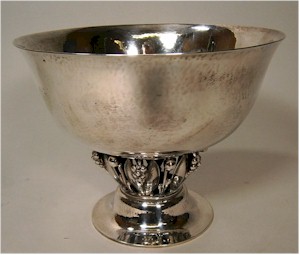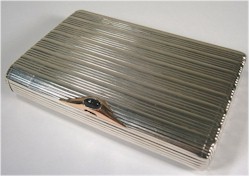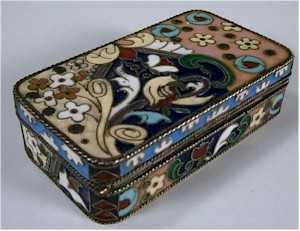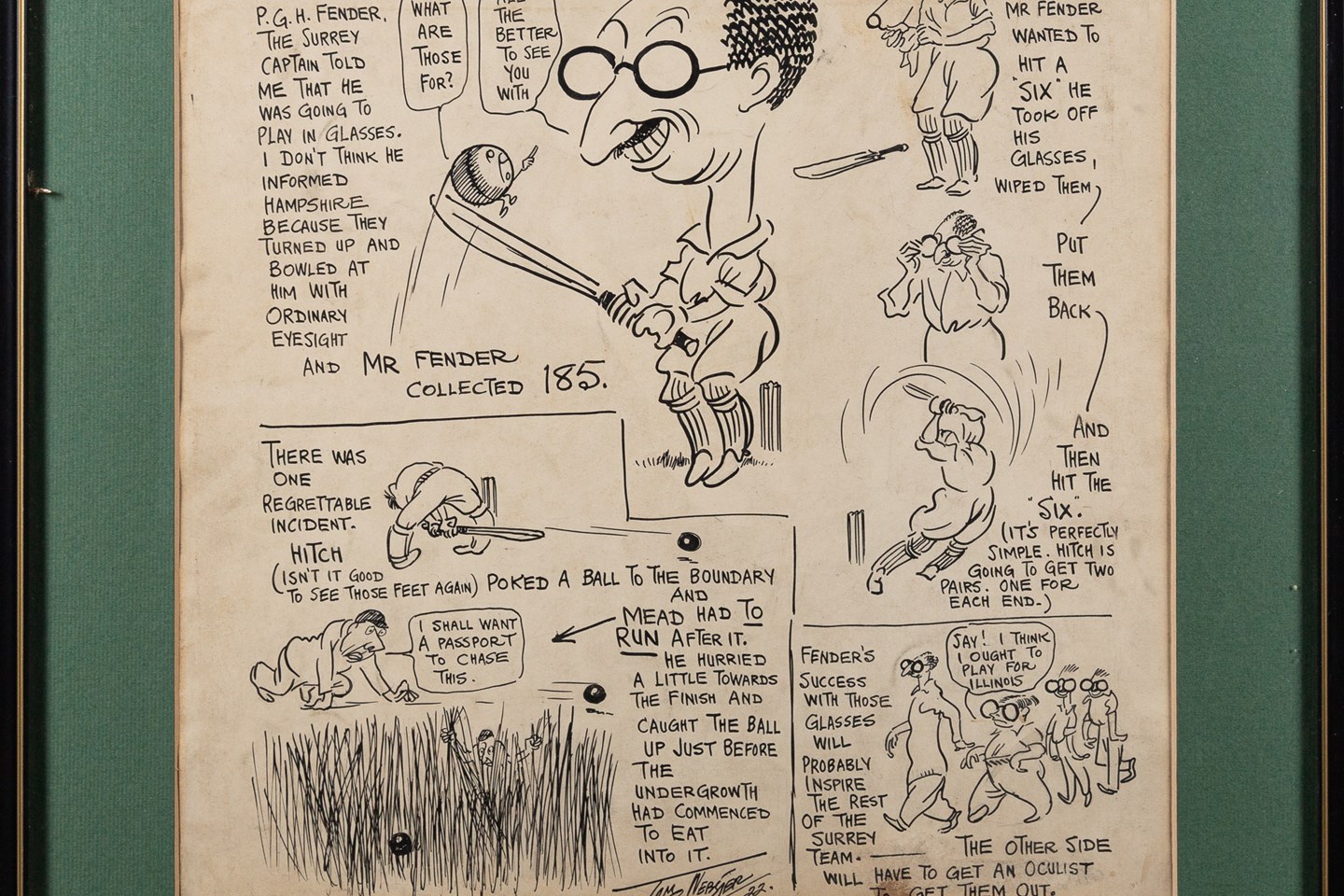
Amongst the silver to be offered in our Fine Sale on the 18th April 2012, there is the usual assortment of examples of English silversmith's art. From salvers to candlesticks, flatware to porringers, all are represented in this sale.
From across the channel there are some interesting objects, most noticeable amongst these are the Imperial Russian pieces. Whilst there is no Faberge pieces included, a Russian silver cigarette case does stand out. The case was made by the Finnish silversmith Johann Aarne, who moved to St Petersburg and worked for Faberge. It is struck with his initials but unfortunately not the Faberge mark, it carries an estimate of £1,000-1,500.

A Johann Aarne Imperial Russian Silver Cigarrete Case.
Estimate £1,000-£1,500.
Other examples of Imperial Russian silver, are two boxes which show different types of inlay. The first is a traditional cloisonné type of inlay with floral designs using numerous coloured enamels, estimate £250-350. The other is the black niello enamel and silver snuff box with scroll and foliate decoration. Niello is the simplest form of enamel using silver, copper lead and sulphur to produce a black powder which is painted on to the object, then fired to melt the niello to the silver.

An Imperial Russian Cloisonne Box and Cover.
Estimate £250-£350.

An Imperial Russian Silver and Neillo Inlaid Snuff Box.
Estimate £150-£250.
Another interesting continental designer and silversmith is Georg Jensen. Jensen studied at the Royal Academy in Copenhagen, originally a sculptor and ceramicist, he finally took up designing silver from 1916 and specialised in high quality silver and jewellery. On offer is a large fruit bowl raised on a stem of leaves and seed pods and a circular base, the estimate is £400-600. Also included in the sale is a Georg Jensen designed preserve spoon, the terminal cleverly designed in the form of three towers, this being the Danish assay mark for silver, estimate £120-£150.
One final item of interest is a Victorian presentation inkwell in the form of a Roman lamp. It was presented to Sake Dean Mahomed by Princess Poniatowski sister to King Stanilaus I of Poland, the estimate is £500-600.
Sake Dean Mahomed was an 19th century Bengali traveller who introduced the first curry house restaurant in Britain in 1810, he went on to open a "shampooing" vapour massage parlour in Brighton. Known as 'Doctor Brighton' he became shampooing surgeon to both George IV and William IV.
- Bearnes Hampton & Littlewood
- Fine Sale
- Silver
- Johann Aarne
- Georg Jensen







